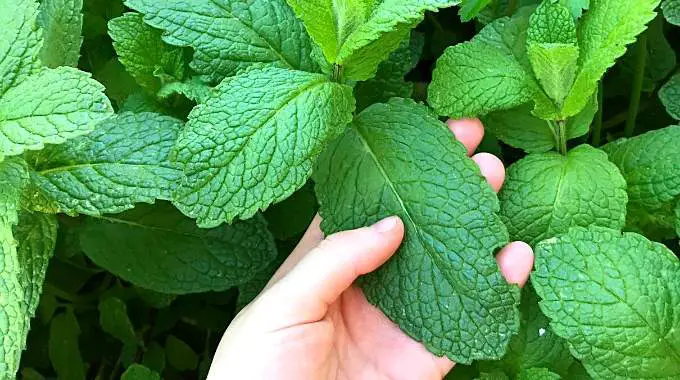Mint is a wonderfully versatile and easy-to-grow herb that thrives both indoors and outdoors. Its maintenance is straightforward, making it perfect for both garden beds and indoor pots. To enhance your gardening skills, I consulted Paul, our town’s expert gardener, to learn the secrets of cultivating abundant mint at home. Here are his top six tips for a thriving mint garden.
Choosing the Right Variety of Mint
Mint (Mentha spicata) is widely recognized for its refreshing aroma and taste. With over 70 varieties available, each offers unique benefits and flavors:
- Peppermint: Known for its strong, refreshing scent and cool taste, ideal for teas and infusions.
- Chocolate Mint: Characterized by its distinct chocolate flavor edged with mint, great for desserts.
- Nanah Mint: Also known as Moroccan mint, it’s perfect for culinary uses like teas and syrups due to its high menthol content.
- Lemon Mint: Offers a citrusy twist that’s excellent for refreshing summer drinks.
- Pineapple Mint: Noted for its subtle pineapple flavor, making it a favorite in cocktails.
For beginners, Nanah spearmint or peppermint are recommended due to their adaptability to pot growing and indoor conditions.
Optimal Planting Times
Mint is hardy and adaptable, allowing for flexible planting times. For outdoor gardens, the best times are:
- Fall: Around mid-October, which helps the plants establish roots before spring.
- Spring: Early March, ideal for planting store-bought plants.
For container growing, mint can be planted year-round, provided it is protected from frost.
Ideal Planting Locations
Choose a spot with loose, rich, well-aerated soil. Mint thrives in partial shade to avoid midday sun, which can dry out the soil too quickly. Also, ensure the location is protected from strong winds as mint dislikes drafts.
Planting Process
Here’s a simple step-by-step guide to planting mint:
- Dig a hole slightly larger than the pot the mint comes in.
- Amend the soil with a bit of sand for drainage if your area has clay-rich soil.
- Add organic compost or a slow-release fertilizer to enrich the soil.
- Plant the mint and gently tamp down the soil to stabilize the plant.
- Water lightly after planting.
Controlling Mint Spread
Mint is known for its invasive nature, spreading through underground rhizomes. To control its spread, consider:
- Cutting the roots annually with a spade.
- Using physical barriers like planting tiles around the planting area.
- Growing mint in containers.
Compatible and Incompatible Plants
Mint aids tomatoes and cabbages by deterring pests but should not be planted near carrots, cucumbers, zucchini, or corn due to adverse interactions.
Maintenance and Harvesting
Mint requires minimal care, thriving with regular watering that keeps the soil slightly moist. Pruning is advised once during the warm season and drastically in autumn to prepare for winter. Harvest mint leaves from spring to fall for the freshest flavor, although drying or freezing is effective for year-round use.
Propagation Techniques
Mint can be easily propagated by:
- Division: Splitting the root ball and replanting.
- Layering: Burying a section of stem in the soil until it roots independently.
Enjoy the fresh flavors and the lush greenery mint brings to your home!
